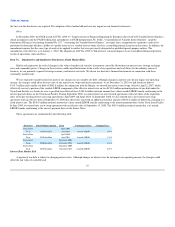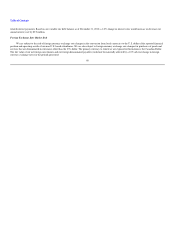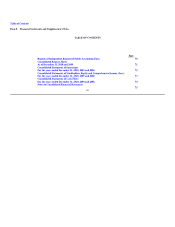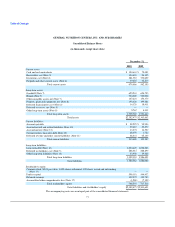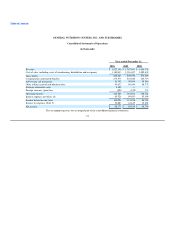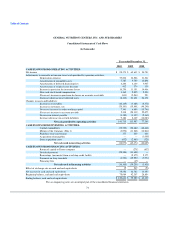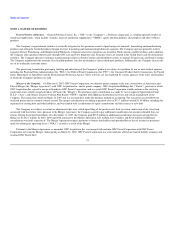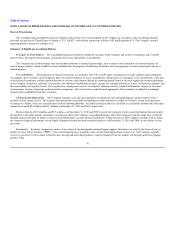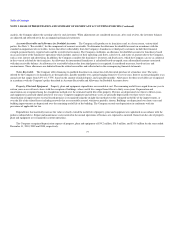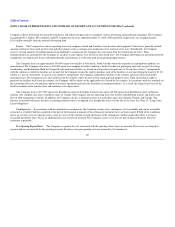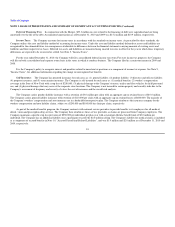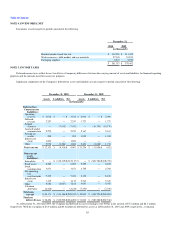GNC 2011 Annual Report Download - page 81
Download and view the complete annual report
Please find page 81 of the 2011 GNC annual report below. You can navigate through the pages in the report by either clicking on the pages listed below, or by using the keyword search tool below to find specific information within the annual report.
Table of Contents
NOTE 2. BASIS OF PRESENTATION AND SUMMARY OF SIGNIFICANT ACCOUNTING POLICIES
Basis of Presentation
The accompanying consolidated financial statements and footnotes have been prepared by the Company in accordance with accounting principles
generally accepted in the United States of America ("U.S. GAAP") and with the instructions to Form 10-K and Regulation S-X. The Company's normal
reporting period is based on a calendar year.
Summary of Significant Accounting Policies
Principles of Consolidation. The consolidated financial statements include the accounts of the Company and all of its subsidiaries and a variable
interest entity. All material intercompany transactions have been eliminated in consolidation.
The Company has no relationships with unconsolidated entities or financial partnerships, such as entities often referred to as structured finance or
special purpose entities, which would have been established for the purpose of facilitating off balance sheet arrangements, or other contractually narrow or
limited purposes.
Use of Estimates. The preparation of financial statements in conformity with U.S. GAAP requires management to make estimates and assumptions.
Accordingly, these estimates and assumptions affect the reported amounts of assets and liabilities and disclosure of contingent assets and liabilities at the date
of the financial statements, and the reported amounts of revenues and expenses during the reporting period. Some of the most significant estimates pertaining
to the Company include the valuation of inventories, the allowance for doubtful accounts, income tax valuation allowances, leases, self insurance liability, and
the recoverability of long-lived assets. On a regular basis, management reviews its estimates utilizing currently available information, changes in facts and
circumstances, historical experience and reasonable assumptions. After such reviews and if deemed appropriate, those estimates are adjusted accordingly.
Actual results could differ from those estimates.
Cash and Cash Equivalents. The Company considers cash and cash equivalents to include all cash and liquid deposits and investments with a
maturity of three months or less. The majority of payments due from banks for third-party credit cards process within 24-48 hours, except for transactions
occurring on a Friday, which are generally processed the following Monday. All credit card transactions are classified as cash and the amounts due from these
transactions totaled $2.4 million and $2.1 million at December 31, 2010 and 2009, respectively.
Book overdrafts of $3.6 million and $0.7 million as of December 31, 2010 and 2009, respectively, represent checks issued that had not been presented
for payment to the banks and are classified as accounts payable in the Company's consolidated balance sheet. The Company typically funds these overdrafts
through normal collections of funds or transfers from bank balances at other financial institutions. Under the terms of the Company's facilities with its banks,
the respective financial institutions are not legally obligated to honor the book overdraft balances as of December 31, 2010 and 2009, or any balance on any
given date.
Inventories. Inventory components consist of raw materials, finished product and packaging supplies. Inventories are stated at the lower of cost or
market on a first in/first out basis ("FIFO"). Cost is determined using a standard costing system which approximates actual costs. The Company regularly
reviews its inventory levels in order to identify slow moving and short dated products, expected length of time for product sell through and future expiring
product. Upon
76


